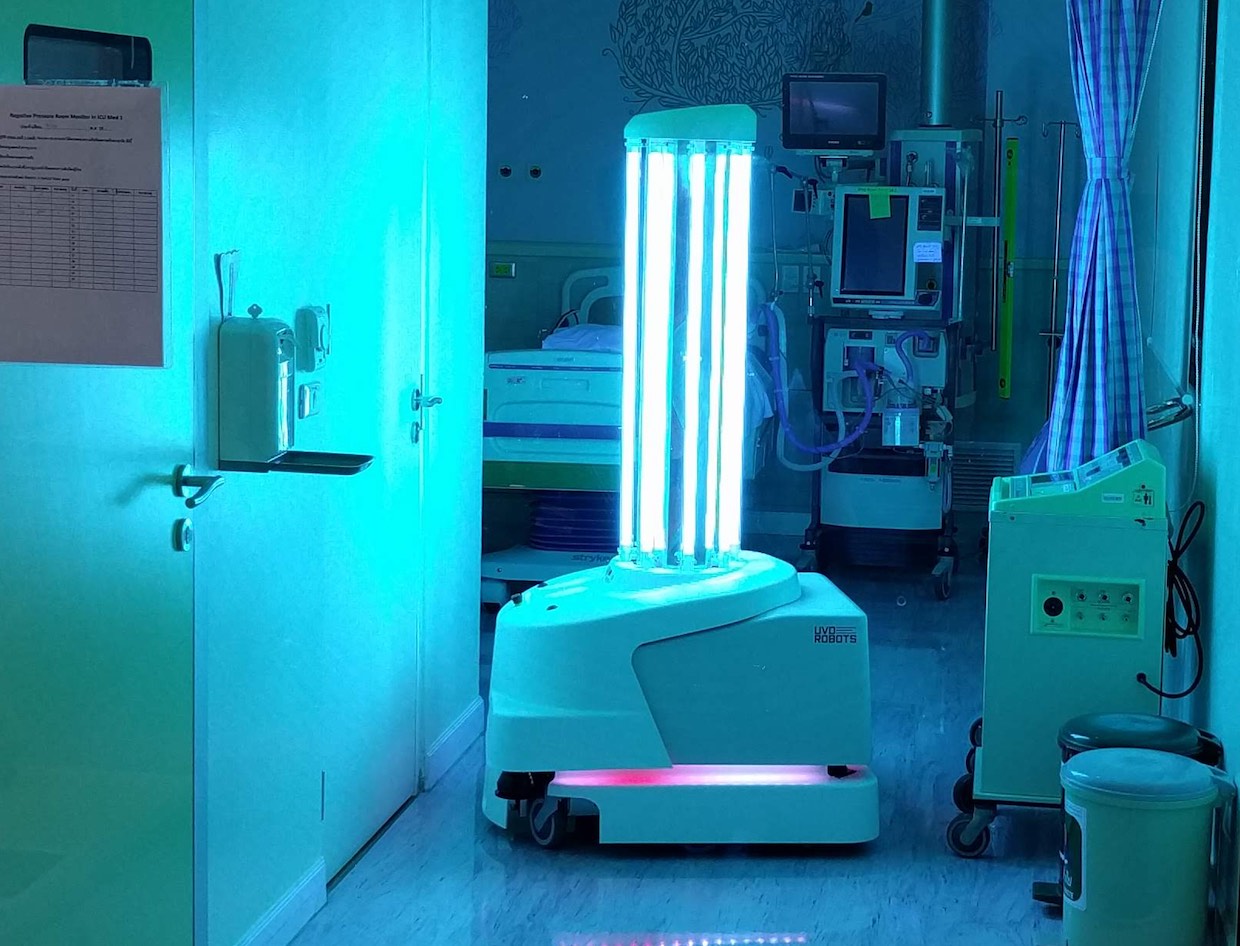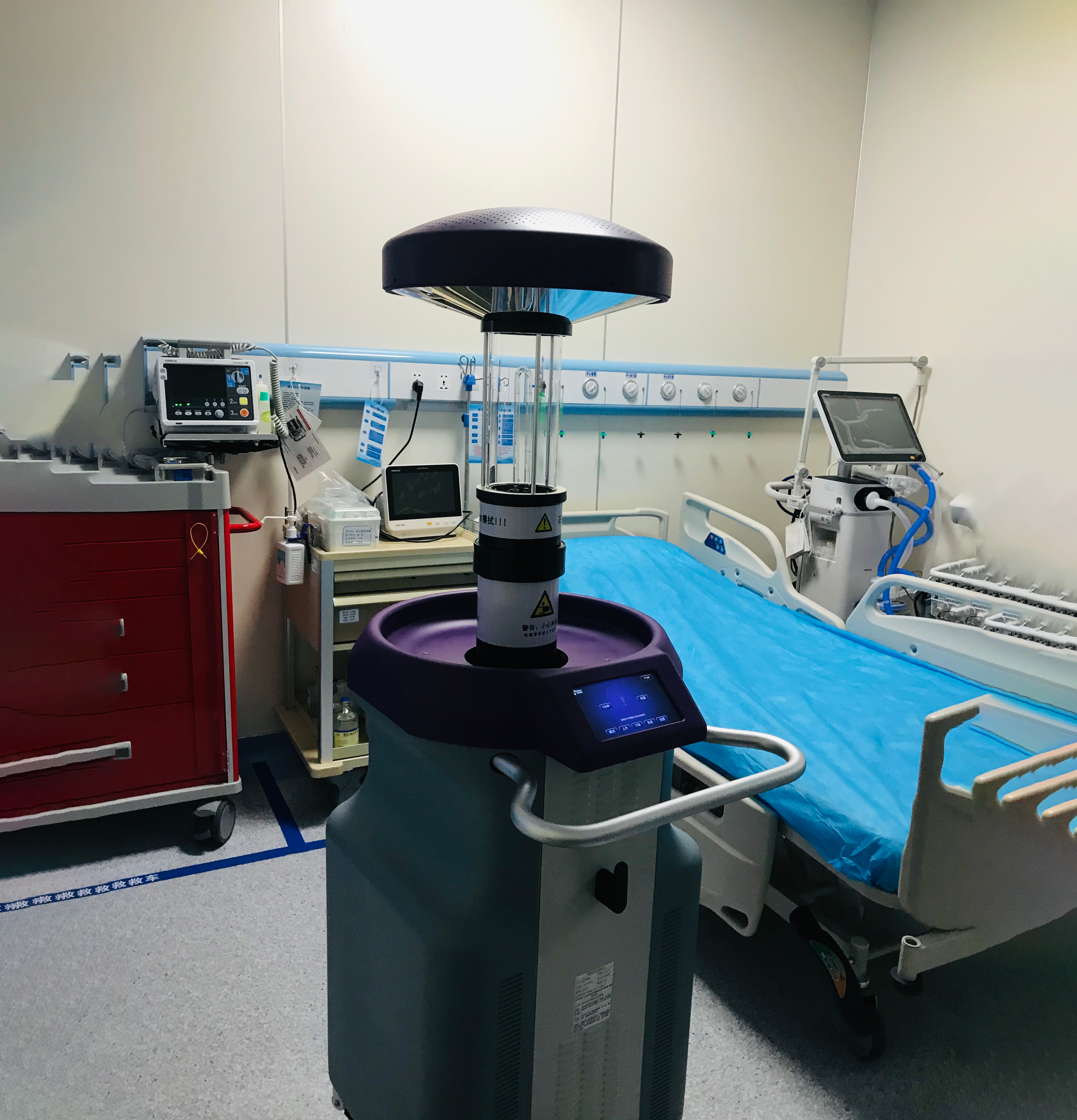How to Effectively Disinfect Using UV Disinfection Machine
2021-03-06 by hqt
UV Disinfection Machine: 5 Steps for Effective Disinfection
The UV disinfection machine has gained unprecedented fame due to the current COVID-19 pandemic. As soon as the world promoted the latest variant of the coronavirus to the position of a pandemic from an epidemic, people went crazy over disinfection solutions. In this situation, UV disinfection regained the limelight that it had lost.
The initial finding that UV light can indeed kill germs dates back to more than a century ago when in 1877, people discovered the germicidal properties of sunlight. But the UV disinfection machine never got highlighted as much as it did in 2020. And today, a year later, the decline of the virus has not taken much away from its popularity.
However, UV disinfection is only effective when done right. Therefore, in this article, we will share some tips on how to use UV disinfection machines for effective disinfection.
What is a UV Disinfection Machine?
UV disinfection machine is a device that houses an ultraviolet light source and leverages the light’s disinfecting properties to ‘disinfect’ viruses, bacteria, and other organisms.
Before the onset of COVID-19, the UV disinfection machines were only found in hospitals disinfecting patients' rooms and surgical tools. And in water treatment plants, killing viruses and bacteria present inside water.
However, the pandemic brought these machines out of their commercial applications and into domestic applications. Many companies begin to roll out small UV disinfecting luminaires and hand-held machines for disinfecting their homes, laptops, and cell phones.
Today, the UV disinfection machine comes in different shapes and sizes. But its purpose remains the same. That is to disinfect organisms and keep people safe.
Being built with a UV light source inside, UV disinfection machines use UVC light for disinfection and can do their job within seconds or within minutes, depending on the intensity and dosage of light.
What is UV Light?
What is the UV light that has reshaped the disinfection industry?
UV light is one of the electromagnetic radiations that falls in the middle of the radiation energy spectrum. Its wavelength ranges from 100-400 nm, which gives it its name, ultraviolet. Because it is shorter than the wavelength of violet and falls out of the visible light range.
Because of its short wavelength and high frequency, it carries energy higher than visible light. And since it is highly energetic, it is capable of ionizing the molecules that it strikes upon. Changing their RNA and DNA. And this capability of UV light has earned it the popularity in the disinfection industry that it enjoys today.
There are three types of UV lights. UVA, UVB and UVC. UVA and UVB have longer wavelengths than UVC rays and hence they are not as energetic. UVC, however, has the shortest wavelength and carries the most energy.
Therefore, the UV disinfection machine, as we mentioned above, uses only UVC lights because they are most capable of modifying the organisms and disinfecting them.
The Phenomenon of UVC Disinfection
The method through which UV light disinfects things is called Ultraviolet Germicidal Irradiation (UVGI). This process is mostly done through some form of UV disinfection machine. Be it handheld or floor-bound.
As we mentioned above, UVC light is super powerful. It strikes the organisms’ cellular structure and modifies critical elements like nucleic acid and proteins.
What happens is, when cells absorb high-energy radiations, they absorb their energy. This energy modifies the DNA of the cell and leads to the development of a lesion. This lesion or pyrimidine dimer prevents the replication of the cells and inhibits the production of protein. Thus, leading to inactivation or death of the organism-cellular structure.
However, since it modifies cells and essentially kills them. Therefore, UV radiations are highly carcinogenic and can lead to cancer if they come in direct contact with any part of the skin.
How to Effectively Use A UV Disinfection Machine?
As you have read in the previous section, UVC radiations are highly carcinogenic. Therefore, it is imperative to practice extreme caution when using them. Moreover, the latest handheld devices, to prevent risks of burning from the UVC light, impart a very low intensity of it during disinfection.
Therefore, it is important to ensure that the UV disinfection machine is doing its job well. The following tips might help you ascertain that the UV disinfectant you are using is effective:
1. The Right Wavelength
One study reported that the far UVC-light is the most promising candidate for disinfecting viruses as it reduced 99.7% of the coronavirus germs from a surface in merely thirty seconds.
The far-off UVC light has a wavelength ranging from 207 to 222 nm. This wavelength is the most effective for disinfecting because it wreaks havoc on viruses and bacteria. While not inflicting any harmful effects on humans because it does not penetrate the outer layer of skin.
2. Correct Dosage
The intensity of the UV light used determines how much dosage does the disinfecting surface needs to be free from viruses and bacteria. If the light source emits low-intensity light, which is the case with the domestic UV disinfection machine, then it needs to keep striking the germs for longer.
Various doses of UV lights are used to kill a wide variety of bacteria including influenza and tuberculosis bacteria. These doses are a product of UV light intensity and exposure time and range from 6500- 12300 µW.sec/cm2
3. Prevent Direct Contact with Eyes and Skin
Apart from being carcinogenic, UVC radiation can lead to injuries on the skin and eyes.
Therefore, it is crucial to always use a UV disinfection machine in a closed room. With a sign outside it preventing humans to enter that room while the disinfection is in progress.
The safest way to use a UV disinfection machine is to place it in the air ventilation ducts. There they can safely disinfect the air before it enters the rooms without being dangerous to the human occupants.
4. Make Sure the Machine Only Uses UVC Light
As we discussed above, UV lights split into three types, UVA, UVB, and UVC. Out of these, UVA and UVB carry low energy and hence are not very effective in disinfecting surfaces. Only UVC radiations are capable of reducing organisms, and that too under proper conditions.
Therefore, make sure the UV disinfection machine that you use is built upon a UVC light source so, given proper condition, it can perform well.
5. Maintain Direct Exposure to the Area
UVC light is only effective in disinfection if it comes in direct contact with the germs. If the surface that you are trying to disinfect is covered in dust, dirt, or fluids, UVC lights will not strike the germs directly and hence will not be able to modify their DNA.
The same is true for the light bulb too. If it is covered with dust, the light will strike dust particles first and will not hit the cells of the organisms directly. An in this case as well, it will fail to perform effectively.
Therefore, it is important to wipe the disinfection surface and clean the light bulb so that the UV disinfection machine can disinfect effectively.
Final Word
Even though the concept of disinfection using UV radiations has been around for a while. The UV disinfection machine has gained popularity in recent years, especially during the pandemic.
The UV disinfection machine uses a UVC light source to disinfect surfaces. However, certain steps are necessary to ensure that the UV disinfection job is effective.
These steps include cleaning the surface before disinfecting, protecting your eyes and skin from contact with the light, and using UVC light only.
For More Information Contact Us Today!



